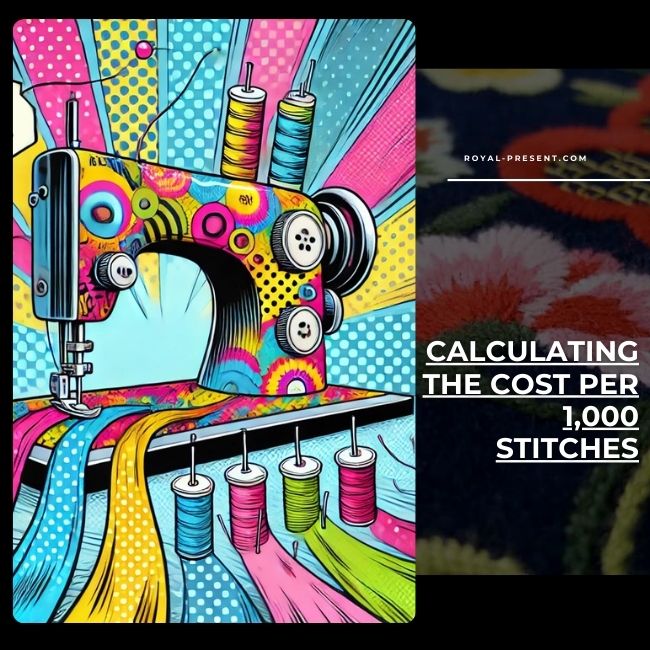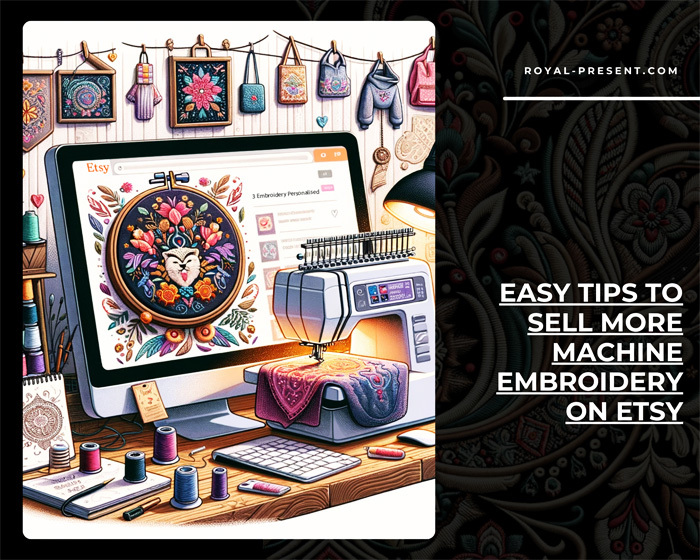
In the intricate world of machine embroidery, pricing is a crucial factor that influences both the business and customer satisfaction. Understanding how to calculate the cost per 1,000 stitches is essential for offering fair pricing, managing expenses, and maximizing profits. This comprehensive guide will walk you through the process, helping you to accurately determine the embroidery cost per 1,000 stitches.
Understanding the Basics of Machine Embroidery
Machine embroidery involves stitching designs onto fabric using automated sewing machines. These designs are typically digitized patterns that guide the machine on where to place each stitch. The number of stitches in a design can vary significantly, impacting the overall cost of the embroidery project. Calculating the cost per 1,000 stitches is a standard method to estimate pricing, allowing for consistency and transparency in charges.
Factors Affecting Embroidery Costs
Several factors influence the cost of machine embroidery, including:
- Complexity of the Design: More intricate designs require more stitches and time.
- Thread Type and Color: The type and number of thread colors used can affect the cost.
- Fabric Type: Different fabrics require different handling, affecting production time and cost. Reed choosing fabric for machine embroidery
- Machine Time: The duration the machine spends on each design directly impacts the pricing.
- Labor Costs: The effort involved in preparing, monitoring, and finishing the embroidery adds to the cost.
Calculating Embroidery Cost Per 1,000 Stitches
To calculate the embroidery cost per 1,000 stitches, follow these steps:
-
Determine Base Costs: Identify the fixed costs involved in the embroidery process. These include machine maintenance, electricity, and other overheads.
-
Calculate Variable Costs: Assess the variable costs, such as thread, needles, and stabilizers, used per 1,000 stitches.
-
Estimate Labor Costs: Factor in the hourly wage of the operator and the time taken for 1,000 stitches.
-
Add Profit Margin: Include a profit margin to ensure the business remains profitable.
Here's a formula to simplify the calculation:
Embroidery Cost per 1,000 Stitches = (Base Costs + Variable Costs + Labor Costs) / Number of Stitches x 1,000 + Profit Margin
Example Calculation
Suppose the total base costs and variable costs for an embroidery project are $50, the labor costs amount to $20 per hour, and the design takes 2 hours to complete 50,000 stitches. With a desired profit margin of 20%, the calculation would be as follows:
- Total Costs: $50 (Base + Variable) + $40 (Labor) = $90
- Stitches Per Hour: 50,000 stitches / 2 hours = 25,000 stitches/hour
- Cost per 1,000 Stitches Before Profit: $90 / 50 = $1.80
- Including Profit Margin: $1.80 + ($1.80 x 0.20) = $2.16
Therefore, the embroidery cost per 1,000 stitches would be approximately $2.16.
Importance of Accurate Pricing
Accurate pricing ensures that businesses cover all their costs while providing fair rates to customers. It helps in maintaining profitability and competitiveness in the market. Additionally, transparent pricing builds trust with clients, as they understand the breakdown of costs and appreciate the value of the service provided.
FAQs
How does fabric type affect embroidery cost? Different fabrics require varying levels of care and handling, which can increase the time and effort needed, thus affecting the cost.
Why is it important to include a profit margin in the pricing? Including a profit margin ensures that the business remains profitable, allowing for growth and sustainability.
Can the cost per 1,000 stitches vary between different embroidery machines? Yes, different machines have varying efficiencies and maintenance costs, which can impact the overall cost calculation.
How can I reduce the embroidery cost per 1,000 stitches? Optimizing design complexity, using efficient thread types, and maintaining machines regularly can help reduce costs.
What role does design complexity play in embroidery pricing? More complex designs with higher stitch counts take longer to complete, increasing the labor and machine time costs.
Is it necessary to update the cost calculations regularly? Yes, regularly updating cost calculations ensures that pricing reflects current expenses and market conditions, maintaining profitability.
Conclusion
Accurately calculating the embroidery cost per 1,000 stitches is a fundamental aspect of running a successful machine embroidery business. By understanding and applying the factors involved, businesses can ensure fair pricing, cover their costs, and achieve sustainable profitability. Whether you’re a seasoned professional or new to the industry, mastering this calculation will undoubtedly benefit your embroidery projects.
You may also like
Easy tips to sell more embroidery on etsy

Author: Ludmila Konovalova
My name is Ludmila Konovalova, and I lead Royal Present Embroidery. Embroidery for me is more than a profession; it is a legacy of my Ukrainian and Bulgarian heritage, where every woman in my family was a virtuoso in cross-stitch and smooth stitching. This art, passed down through generations, is part of my soul and a symbol of national pride.
Date: 24.06.2024


 Get Sign-In Link
Get Sign-In Link Login with Google
Login with Google Login with Facebook
Login with Facebook Login with Amazon
Login with Amazon Login with Paypal
Login with Paypal